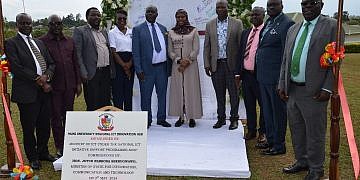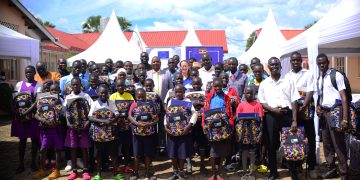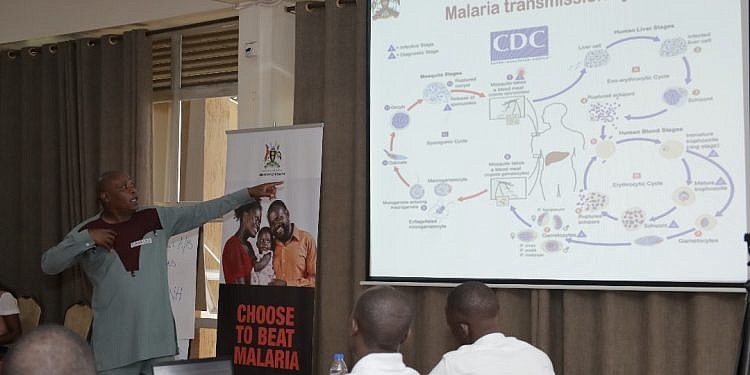In the first week of April 2024, Uganda grappled with a significant surge in malaria cases, with over 91,000 reported instances.
Tragically, this spike in infections also led to 22 deaths during the same period.
During the 14th week of 2024, spanning from April 1 to 7, Uganda grappled with a concerning surge in malaria cases.
Official reports revealed a staggering total of 91,968 confirmed cases of malaria across the country during this period, accompanied by 22 tragic fatalities.
However, the reporting rate for this period stood at 60.1%, indicating that some districts might not have reported their data, potentially leading to an underestimation of the actual cases.
The test positivity rate(TPR) was alarmingly high at 36.6%, signaling a widespread prevalence of the disease within the population.
During the reporting period, Uganda conducted extensive testing for patients presenting with fever, achieving a high testing rate of 97.8%, totaling 226,264 individuals. Out of these tests, 92.0% yielded positive results, leading to treatment for 84,638 patients.
Alarmingly, a small proportion, 2.5% (4,053), were treated despite a negative test, while 0.7% (617) received treatment without being tested at all.
Geographically, the districts of Kibuku, Pader, and Iganga emerged as hotspots, reporting the highest number of malaria cases, with Kibuku topping the list with 3,153 cases.
The burden on outpatient departments (OPD) across the country averaged at 22.2%, indicating significant strain on healthcare facilities.
Notably, the Lango region bore the highest burden, reaching 40.2%, underscoring the localized severity of the situation.
These findings shed light on the intricate dynamics of malaria transmission and healthcare delivery in Uganda, emphasizing the need for targeted interventions and resource allocation to address the disease burden effectively.
However, through collaboration between the U.S. President’s Malaria Initiative (PMI) and Uganda, significant progress has been made in the fight against malaria.
Child mortality rates have seen a decline, attributed to the widespread distribution of mosquito nets and enhanced malaria prevention measures for pregnant women.
Dr. Charles Ntege, speaking at the Source of the Nile Hotel in Jinja during a media training on malaria, highlighted a positive trend in malaria cases, attributing it to the collaborative efforts of the Ugandan government, USAID, Obulamu, and the U.S. President’s Malaria Initiative (PMI)
“When you look at the epidemiology of the diseases and what we’ve been seeing, there’s a slight improvement in the cases due to the interventions that have been put in place. Remember the government have out long lasting insecticide treated nets and then conducted indoor residual spraying. These two interventions catch tremendously cases at a downward trend and we are hopefully that we’re likely to see mire cases going down,” Dr. Ntege said.
While speaking to journalists, Dr. Gloria Sebikaari, from the President’s Malaria Initiative(PMI) said the US government through PMI, have really invested in strengthening and equipping the Ugandan people to fight malaria.
“The US government through the President’s Malaria Initiative(PMI) has invested since 2006 in malaria control individuals in this country. We have provided up to 17.1 million mosquito nets. These go through routine systems of distribution where we give them to pregnant mothers and children who are just coming for immunisation as well as supporting the universal BedNet current campaigns with other partners, including global fund and AMS.” she said.
She added that more than 10 districts have been sprayed through the indoor residual spraying program protecting millions of people against malaria.
“PMI also supports largely indoor residual spraying in this country to a tone of 13.9 million has been invested since 2006 Spraying more than 10 districts protecting millions of people against malaria. We also encourage preventive medication given to pregnant women to prevent them passing malaria to their unborn babies by providing them with a prophylactic drug that we call locally as fansidar. We also provide anti-malarial treatments, we provide them with diagnostic tests for the malaria rapid diagnostic tests. We also provide a team best combination therapy that we commonly call the ACTS or Coartem as a local person calls them.”
Dr. Sebikaari urged communities to embrace preventive measures in the ongoing fight against malaria within their homes by Making their households/home environments safe, clearing away areas where mosquitoes breed, adopting positive behaviour For example, using insecticide treated bed nets that have been distributed throughout the country and Accept practices like spraying indoor residual spraying and also go for early treatment seeking.
According to the 2023 US report to Uganda, 2.5 million mosquito nets were distributed, 3.2 million residents in 770,000 houses were protected from malaria, 4,000 Ugandans trained for indoor residual spraying enhancing the effectiveness of mosquito control efforts and 5 million malaria testing and treatment kits provided to health facilities.







































